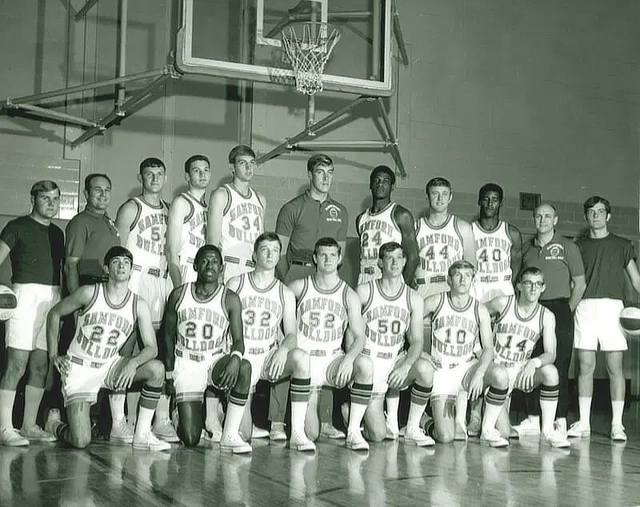
Samford Athletics has played a major role in the history of sports in the state of Alabama. From playing the first game at historic Legion Field, to being the home to legendary coaches like Bobby Bowden, Pat Sullivan and John Brady, Samford has experienced its share of monumental moments. One of the most impactful milestones is the role Samford played in the integration of collegiate athletics in the state.
For the 1969-70 basketball season, Samford welcomed three African American junior-college transfers, Sherman Hogan, Otha Mitchell and Billy Williams. A year earlier, Auburn welcomed its first African-American scholarship student-athlete and Alabama signed its first minority student-athlete in 1969 but Samford was the first major university in the state to fully integrate its program.
Bill Stevens (’70) is a member of Samford’s Board of Trustees and was a teammate of the trio.
“The thing that I think stands out, both in retrospect and at the time, and it’s a credit to them, was the way they became part of the student body and the basketball team,” Stevens said. “They were good athletes, and they were credible players and it meant they could help the team and they eventually did, they really did. All three of them did.”
Stevens said, the team all lived in the same dormitory and travelled together, which helped with the closeness of the team.
“We all lived on the same hall, in Crawford Johnson Hall, where the divinity school is now,” Stevens said. “So, we were all together pretty much all of the time.”
All three players were transfers from Coahoma Community College in Mississippi, and they played at Samford during the 1969-70 and 1970-71 seasons. The new players contributed right away to the team’s success that first season. Hogan scored 532 points, averaging 21.3 points per game in 1969-70. That same season, Mitchell tallied 416 points, averaging 16.6 points per game.
The 1969-70 team posted a record of 16-9, and the team scored 100 points or more in seven of the team’s games. The following season, in 1970-71, the Bulldogs went 16-10, scoring over 100 points five times, including a then-school record 131 points in a win over Mississippi College.
Despite the significance of the situation, Stevens said there was not a lot said about it at the time.
“There were a lot of changes going on with the program between this and the transition of coaches, but there wasn’t what I would consider any sort of formal announcement or anything like that,” Stevens said. “It really was, I would say, somewhat lowkey, but certainly it was meaningful and significant on campus.”
As a university, Samford had already integrated its classes when, in 1967, Audrey Lattimore Gaston became the first African American to enroll at Samford. She was a student at the Cumberland School of Law. In 1969, the same year the basketball trio came to Samford, Elizabeth Sloan became the first African-American residential undergraduate student at the university.
“Samford set an example here that other universities soon followed,” Martin Newton, Samford’s director of athletics, said. “The move to inclusivity during that historic season reflects Samford’s values that we emulate today - ones of justice, appreciation of others, and engagement with the teachings of Jesus Christ. Our athletics teams are better for it.”
Any time a barrier like this is broken, it is significant because it opens opportunities for the future. Members of the current Samford men’s basketball team reflected on this milestone and what it means to them today.
“I’m just so thankful for them because I know how hard it was for them to have to go through that in those times,” Jermaine Marshall, a senior on the current Samford men’s basketball team, said. “I want to say thank you and we are very appreciative of what these men did.”
“We just appreciate them paving the way for players like most of us on the team,” Garrett Hicks, a graduate student on this year’s men’s basketball team, said. “We are glad to be Samford Bulldogs.”
